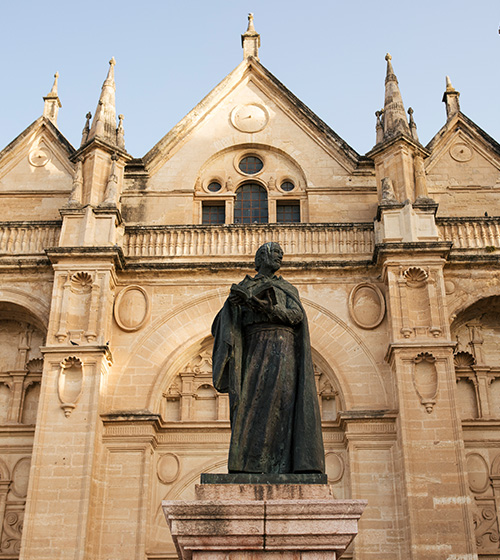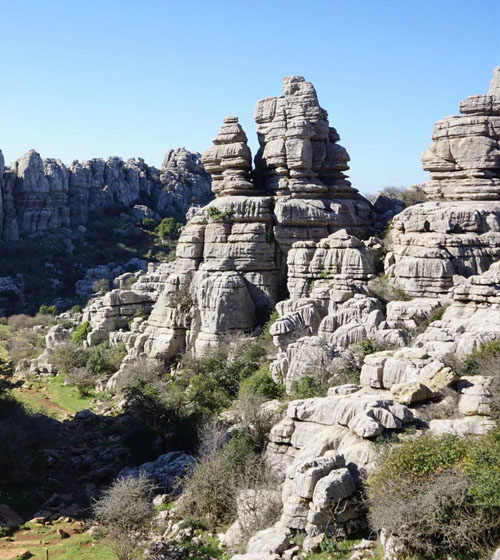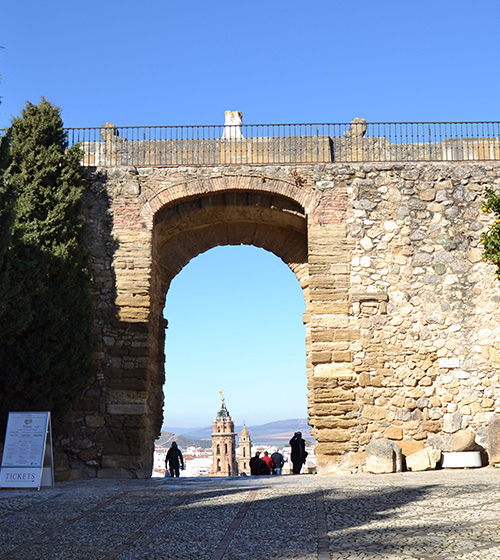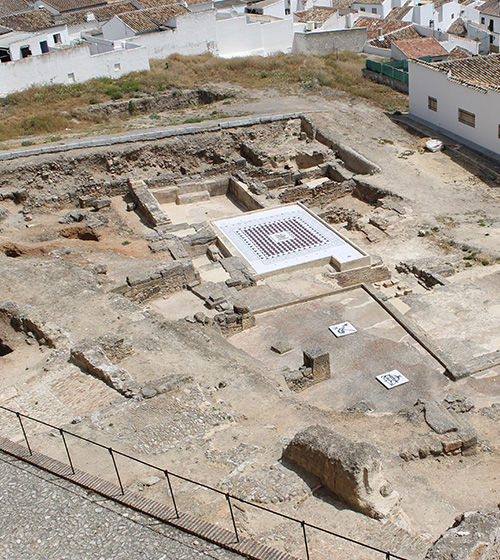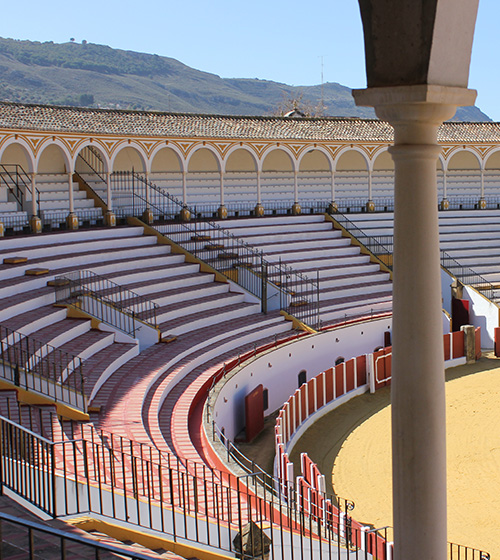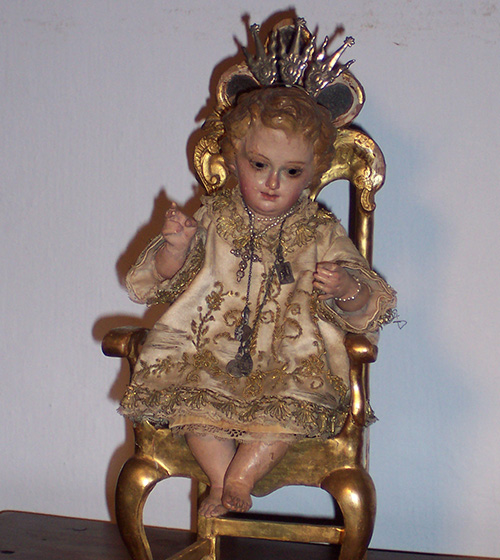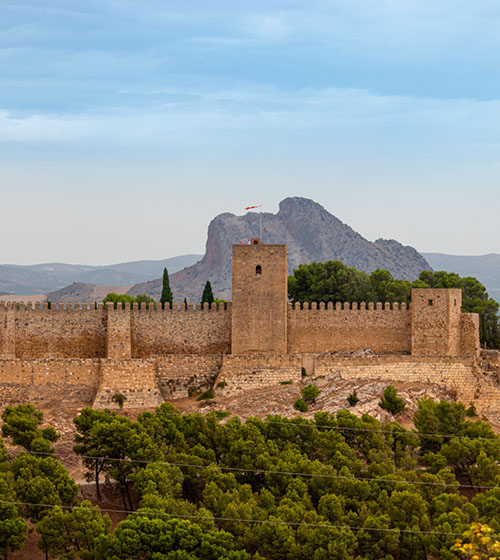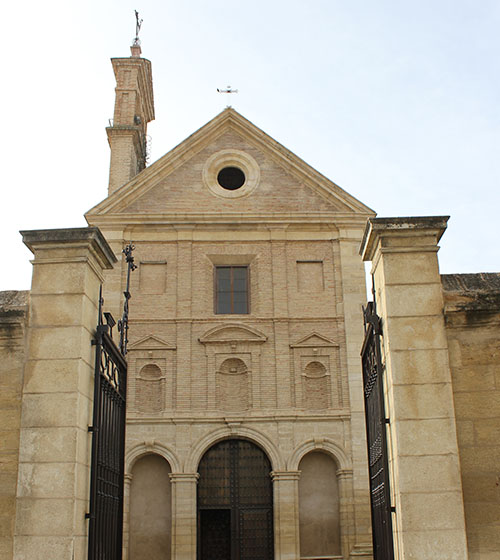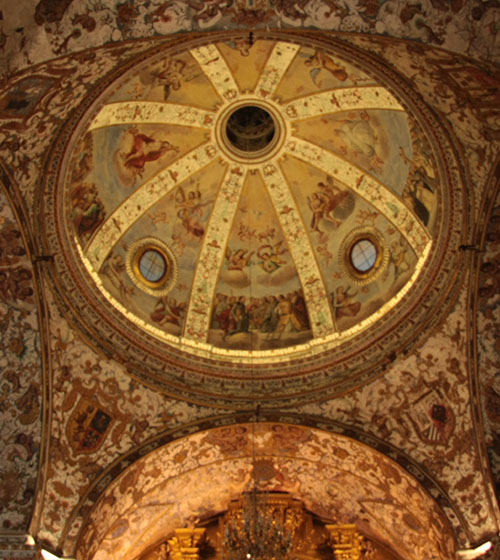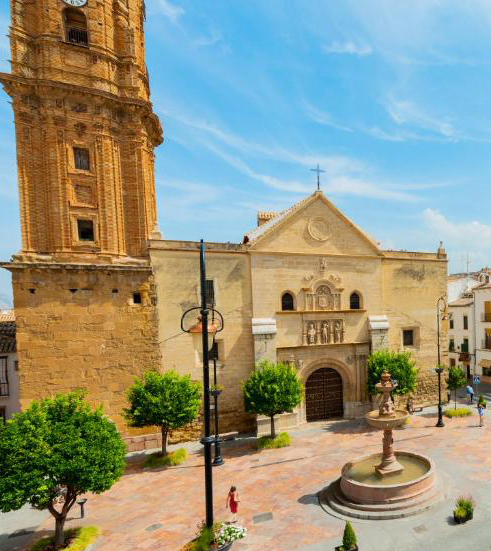Real Colegiata de Santa María la Mayor
The importance of this building lies in being the first to be conceived within the Renaissance style in Andalusia. It is truly an exceptional work for its proportions and quality of its design. In it, two different style criteria coexist; on the one hand we find elements that remind us of the late Gothic and on the other its traces and various decorative elements already correspond to the new style that emerged in Italy.
Plaza de Santa María s/n Antequera, Málaga
Real Colegiata de Santa María la Mayor
The Torcal of Antequera
Natural Park since July 18, 1989, which provides the area with special protection for its important natural values: geomorphology, flora, fauna and landscape.
El Torcal Alto Visitor Center, Road A-7075
The Torcal of Antequera
Arch of the Giants
The Arch of the Giants located in Antequera (province of Malaga, Spain) is a construction made by municipal initiative in 1585 within the approaches of humanism, in order to replace a bend access of the Muslim fence wanting to evoke with its great semicircular span the triumphal arches of the classical world.
Plaza de los Escribanos, Antequera, Malaga
Arch of the Giants
Roman Baths
Located in the historic center of the city. The discovery of these baths is the first reliable proof of the location of the Roman city of Antikaria under the current urban center. The excavation work began in 1988, as a result of the earthworks prior to the urbanization of the site, and has been developed until 1991 by the Antequera Workshop School.
Plaza Santa María la Baja. Antequera.
Roman Baths
Bullring
This arena was built by the Society of the Plaza de Toros de Antequera, a society formed by amateur citizens who longed to have a permanent structure for the Fiesta until then held in public squares arranged with tablados and talanqueras. In 1847 the land was acquired and the works began under the direction of Manuel García del Alamo continuing them Rafael Mitjana, author of the Plaza de Toros Vieja de Málaga.
Paseo María Cristina, Antequera, Málaga
Bullring
Blessed Mother Carmen Exhibition
This museum does not offer works of art but “a space for silence and recollection”, dealing with a chapel where objects and memorabilia of Mother Carmen of the Child Jesus are exhibited.
Carrera Madre Carmen Street, 4, Antequera, Malaga
Blessed Mother Carmen Exhibition
Monumental Site of the Alcazaba
The citadel of Antequera can date its origins to Roman times. It was declared an Asset of Cultural Interest in 1985 in the figure of Monument.
Plaza de los Escribanos, Antequera, Malaga
Monumental Site of the Alcazaba
The Belen Convent
This convent belonged to the Discalced Carmelites until the nineteenth century, when it became occupied by the Poor Clare Sisters, who still reside in it as cloistered nuns and are dedicated to some crafts, including the elaboration of mantecados and sweets in general. This temple that we can admire today was already being built in 1628 by the Portuguese Gonzalo Yáñez, and has a sober façade, carved in stone and brick combined.
Calle Belén, 6, Antequera, Málaga
The Belen Convent
Church of Nuestra Señora de los Remedios
The first foundation in Antequera of the Third Franciscans was in 1519, in a place known as Las Suertes. There began to be highly venerated the small image of the Virgen de los Remedios who was named Patroness of the city in 1546. As a result of the remoteness of the location of the monastery and the increase in the cult of sculpture, the friars were encouraged to move to Antequera in 1607.
Calle Infante Don Fernando, 72, Antequera, Málaga
Church of Nuestra Señora de los Remedios
Collegiate Church of San Sebastián
The Collegiate Church of San Sebastián is the result of numerous additions and reforms over time. Its construction began in 1548, directing the works the architect Diego de Vergara. The year 1692 was important for this temple since it is the moment in which the Insigne Colegial is moved from Santa María to this church of San Sebastíán, with which it will undergo a great transformation and embellishment.
Plaza San Sebastian, 6, Antequera, Malaga.
Collegiate Church of San Sebastián
